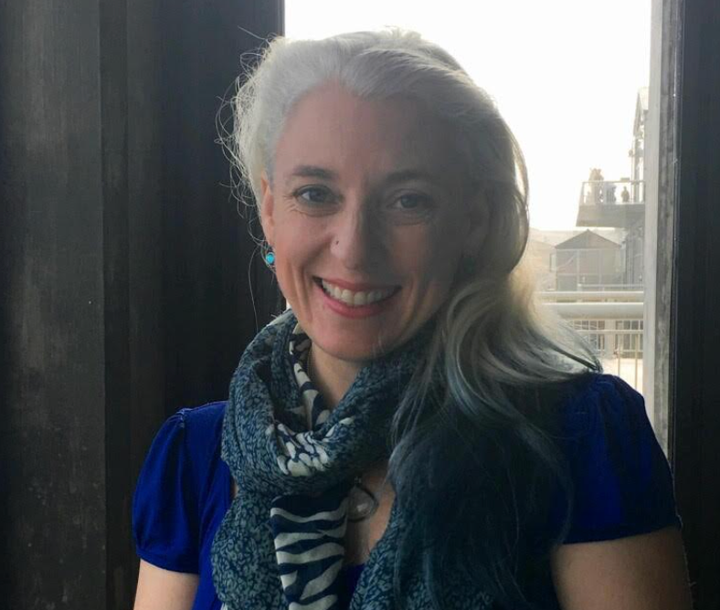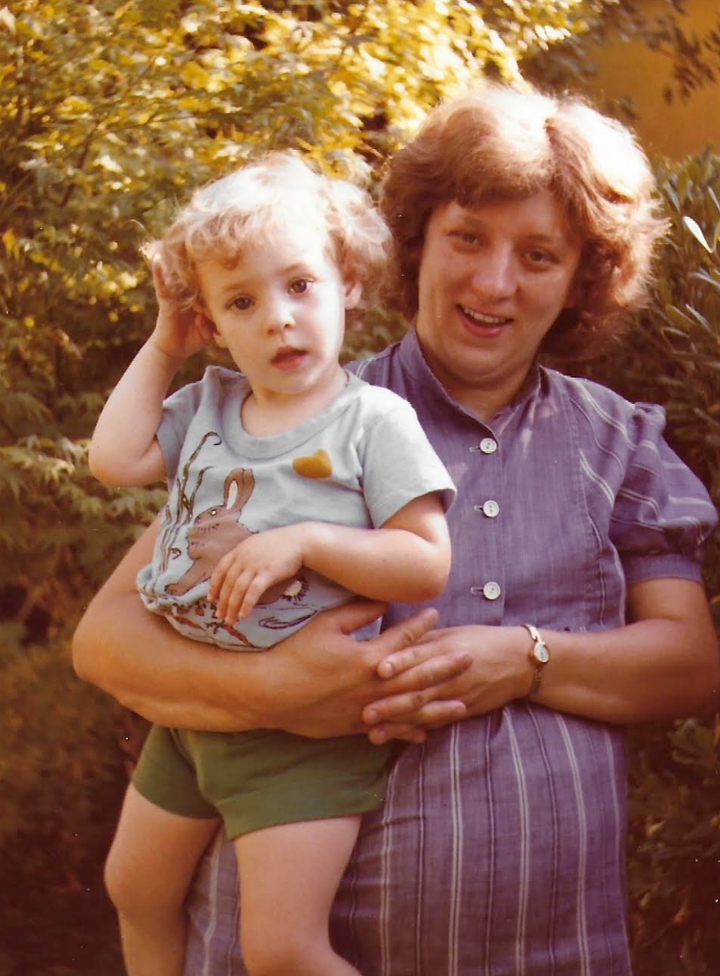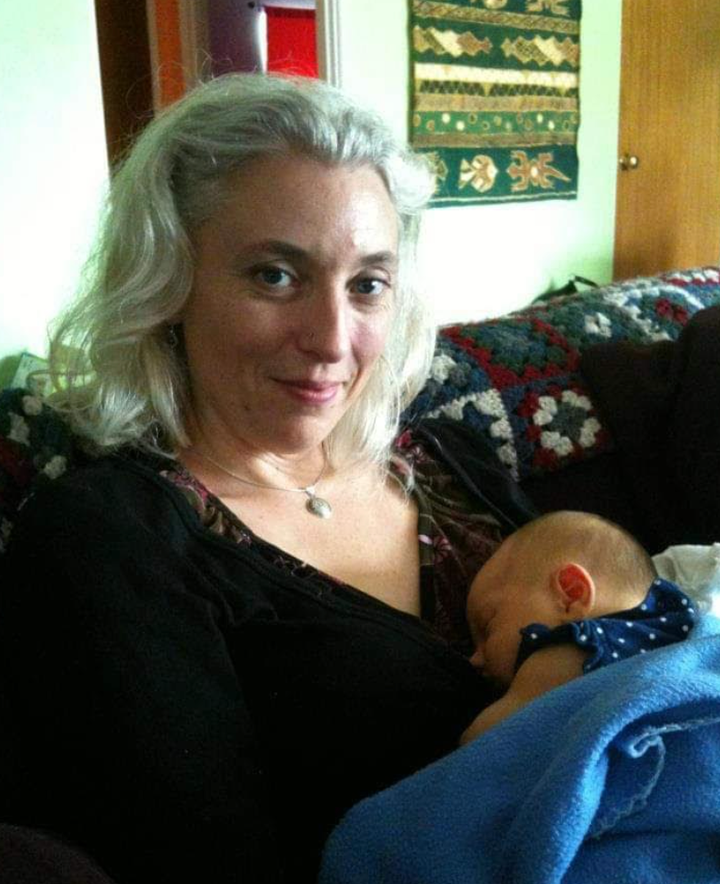
Months into the process of trying to become pregnant with my gay friend’s sperm, I got a phone call that changed everything.
“What do you mean he can’t be the father?” I asked.
Patiently, the nurse explained it all again: How initially, my fertility clinic had supported my desire to use a “known sperm donor” — a close friend who had agreed to help me achieve my dream of becoming a mother — though now it seemed they could not. “These last blood tests didn’t come out as we’d expected.”
This came as a shock. By then, I’d already paid thousands of dollars to have my eggs removed and frozen; my friend had endured the discomforts of, for instance, donating sperm in a clinic back room furnished exclusively with heterosexual porn — videos and magazines with titles like “Everybody Loves Bri!” placed there primarily to aid married heterosexual male patients — and attending awkward interviews where he was required to say aloud what the clinic administrators already knew from his intake form: Was he sexually active? Had he ever had intercourse with men?
Moreover, we had signed copious consent forms and legal contracts, and disclosed our entire health histories ― hereditary patterns, illnesses, surgeries, and infections, including a minor STI that my donor had been successfully treated for years earlier.
“But we told you about that months ago,” I replied to the nurse.
The problem, apparently, was mathematical: a minuscule level of antibody still showing up in my friend’s blood ― and a little-known FDA regulation stating that before a man can become a sperm donor, any related infection must be effectively treated. His had been, but, given the way the clinic’s policies were written, he was nonetheless being denied. I would need to find another donor, preferably an anonymous one from our local sperm bank ― someone my child would likely never meet.
“But,” my breath caught, “he’s the baby’s father.” And although I planned to raise our child on my own, my friend wanted to remain involved as a family member, attending birthday parties and school graduations, offering advice and an occasional shoulder to cry on. Someone to love my child fully and without condition, as I would. Nothing seemed more significant than that.
“The sperm bank has many other great donors,” the nurse assured me. “We work with them all the time.”
This, I already knew. Months earlier ― long before I’d mustered up the courage to ask my friend if he wanted to be involved and he’d enthusiastically agreed ― I’d read through those glowing profiles at the local sperm bank. Did I, for instance, want my child to have musical talent? Or a scientific mind? Impressive physical stature? Or perfectly clear blue eyes? Reading through those lists was dizzying. Maybe my kid would one day ace the LSATs? Or become an Olympic athlete?
It’s not that I didn’t care if they wound up smart and successful, but I also wanted to be able to share with them sweet stories about their father’s childhood and offer wisdom from their grandparents’ lives. I wanted my child, if possible, to get to know where they came from and to have it be from a person I knew and loved. So it wasn’t perfection I sought, but family.
“Please,” I begged the nurse before she hung up. “I just want to have my baby.”
“I’m sorry,” she answered ― and I believed she truly was, though nothing, it seemed, could be done.
***
Born during the handful of years between Roe v. Wade and the first successful birth from in vitro fertilisation, I’d been told all my life that I had a choice about when and how to start a family. Making use of that apparent freedom, moreover, had felt like a responsibility: something I owed the women before me, like my gay mother, who, after two closeted decades, had finally left her heterosexual marriage. Or her mother, married to an abusive man until the day he died. Or my other grandmother, who sought an illegal abortion at the outbreak of WWII. If earlier generations had fought for the right to choose, it seemed like I should use it.
More recently, reaching forty and finding myself still single, I’d decided to have a child alone. This meant my new family wouldn’t be conventional, but I was OK with that. The one I come from isn’t, either. I’d also never assumed that being a single mother would be easy, though I’d certainly never imagined that I wouldn’t have the freedom to choose my child’s biological father.

“I’ll sign anything,” I promised, calling up my doctor again the following week. “Indemnify the clinic — accept all risk.”
As it turned out, though, there wasn’t any risk.
“You mean, nothing bad could happen to me? Or the baby?”
“Not in IVF,” she confirmed, which, due to my age, had already been decided on as my path to pregnancy. While some other, less complex fertility treatments might use more of the father’s biological material, for IVF, a single sperm is removed and isolated, placed inside a single egg and grown for several days in the lab. After that, it’s placed back inside the uterus, without reasonable risk of infection.
“Then why does it matter?” I asked.
I certainly wouldn’t suggest that risks shouldn’t be mitigated, or that male donors shouldn’t, when relevant, be asked to complete medical treatment before donating sperm, but the unstated assumption seemed to be that gay men are unlikely ever to be free of such infection. Even in a liberal city like Seattle, where I live, our local sperm bank cannot allow a sexually active gay man to donate at their labs regardless of specific health history, due to the same FDA policy.
“If he was my partner,” I asked, “would this matter?”
No, the clinic admitted. Married heterosexual men have different rights because they are considered fathers, not donors. Although they may be asked to take precautions, they would not be similarly denied. But we were ― a single woman with a loving gay friend. The two of us, it seemed, could not create a life together. At least not without a fight.
“We’d need evidence,” my doctor explained, “to further consider your case.”
“Even though there’s no risk?”
Even so.
“All right,” I agreed. After all, my only option was an anonymous heterosexual donor. And under the pressures of such policies, I realised that people like me — with one gay and one straight parent — are effectively being eliminated from our country’s future. Moreover, my own body was being asked to participate in the erasure of people like me, who come from families that are anything less than perfectly straight. And I refused.
Instead, I spent months tracking down obscure policy documents and acquiring letters and testimonials from experts and public health officials documenting the fact that my friend’s antibody titration levels did indeed fall within accepted medical limits, and that we were being denied for reasons of policy rather than medical need. Even so, the process dragged on. Each time we submitted another document supporting our case, the clinic asked for more — three letters, four, five, six. So much evidence for what we already knew: that my friend was safe, and so was I. That our child had as much of a right to exist as any did.
Finally, nearly a year after I’d begun the process, the nurse called again — this time with good news. “We’ve updated our policy,” she explained, and I was stunned. Yes, she confirmed, it was true: I had indeed earned the right to become pregnant with my friend’s sperm.
Exhausted by then, and still rattled by it all, I thanked her. Then again, a few weeks later, she called with another happy update. After fertilisation in the lab, our embryo was alive and well. All the requisite genetic testing had been conducted, and they’d confirmed that our baby-to-be was healthy — and male.
“We’re going to have a little boy!” my friend’s voice rang euphoric through the phone line when I told him.
“Yes,” I breathed, deliriously happy, as it all became more real. Finally, we were going to have our baby — finally, it all began to feel worth it.

At the time, I had no idea how unlikely our victory was. I didn’t yet know, for instance, that our local sperm bank’s exclusion of gay donors is consistent with that of sperm banks across the country, despite the need for more BIPOC sperm donors and ongoing updates to regulations on blood donation by gay men. Instead, sperm banks still decline to accept gay donors, citing the same FDA policy that had challenged me and that my fertility clinic had eventually found a way — at least with respect to my “known donor” — to work around.
For a time, though, I didn’t have to think about all that. While I waited through the next several weeks of IVF medications, our lives became mercifully quiet, leading up to that tiny, healthy embryo — my precious, week-old son — being placed inside me. Thereafter, those early, joyful days surprised me, more than anything, with their peacefulness. Such quiet intimacy, such relief — until more devastating news hit.
Although I do not blame anyone in particular — not my clinic or its former policies, not the FDA and its slow progress toward equity — for what happened when our baby miscarried, neither can I help but wonder what might have happened instead without all that additional, and truly unnecessary, stress or the implicit message that the life I’d hoped to create was not welcomed by the systems around me. Would my pregnancy have held? Would my child have lived? I can never know.
***
A pair of years later, we had some other cause for celebration when I attended my former sperm donor’s wedding. Among those lovely late summer blooms, my friend and his longtime partner shared their vows, though no child of mine was present, tucked warm against my lap through the service, or grasping toward his father in the receiving line. It was a lovely event regardless, held in Washington state, where we didn’t necessarily have to worry whether or not the still pending “Respect for Marriage Act” would pass — though we’d all be glad when it did.
Even so, we also knew that such legislation, by itself, isn’t enough. Families are created in all kinds of ways ― we have made ours, my friend and I, by way of shared community and enduring love. Though we do also, in quieter moments, still admit to each other what we’ve lost. For all of our respective joys, we still miss that other life, the one we’d tried so hard to create — the one that perhaps the world wasn’t yet ready for.
Writer and educator Susan V. Meyers directs Seattle University’s Creative Writing Program. Her novel “Failing the Trapeze” won the Nilsen award, and other work has recently appeared in The Rumpus, Creative Nonfiction, and New Orleans Review. She is at work on a memoir about reproductive rights and a novel about her family’s history in the circus. You can find her at susanvmeyers.com.